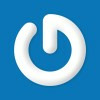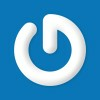
Osteopathic Manual Medicine, in short, is a medical treatment utilized by the hands of a skilled osteopathic physician who approaches the body from an osteopathic understanding of how the body, as a unified whole, functions to preserve life and health. Here is a better breakdown:
- OMM is osteopathic in that is adheres to A.T. Still’s tenets of osteopathy as it is being utilized as a treatment modality. The tenets are as follows:
a. The body is a unit. The person is a unit of body, mind and spirit.
b. The body is capable of self-regulating, self-healing and health maintenance.
c. Structure and function are reciprocally interrelated.
d. Rational treatment is based upon an understanding of the basic principles of body unity, self-regulation and the interrelationship of structure and function.
2. OMM is manual in that the entire method of treatment is provided by the hands of the physician. There are different types of manual techniques in OMM, but all involve the hands in diagnosis, position during treatment and reassessment after a technique has been employed.
3. OMM is medicine in that it is used by a licensed physician, based on a medical diagnosis, and given with a specific therapeutic intervention in mind within the care of the patient as a whole. It is important to note that though OMM can easily be applied to almost every clinical presentation, it is not without contraindications, and therefore can be withheld by the medical professional when those situations arise.
So how is OMM helpful?
OMM provides a relatively noninvasive treatment to the patient’s body to provide better form, better function, and ultimately—better healing. Though it usually involves diagnosing parts of the body that are restricted, injured, strained, decompensated, painful or inflamed, treating these parts provides effects that stem beyond the scope of musculoskeletal complaints.
For example: treating the ribs of a hospitalized patient with pneumonia does more than relieve the pain of breathing and coughing. When done properly, it can improve lymphatic drainage of the site of infection, increase venous return to the heart, increase circulation to the affected lobe of the lung (improving the localized effects of the drugs used in the patient management), decrease congestion of the trachea and bronchial tree, balance the influence of the autonomic nervous system- all while helping the patient better obtain and utilize the necessary oxygen, which the patient is having difficulty acquiring from lungs that are battling a bacterial, fungal or viral disease. In summary, it aids in providing health to the patient that is beyond the scope of other drugs and treatments that, although necessary and beneficial, neglect portions of the “body” aspect of patient unity.
OMM is not simply an extra mode of manipulating the spine and patient’s body to relieve painful symptoms. It is not simply an extra skill learned in an osteopathic medical school. It is an integrated medical approach and treatment that provides an osteopathic physician a comprehensive method of treating the body as a unit, dependent on healthy form and function, with intrinsic capacities to work toward self-healing and self-maintenance. Through this approach of providing medical care to patients, the patient’s inherent, healthy properties can be supported in a way that keeps the patient healthy and free of disease. To borrow a quote from a colleague (Meg Richard, DO-15), “Osteopathy is about staying ahead of the disease.”
When osteopathic treatment is provided effectively through medical management and proper Osteopathic Manual Medicine, patient health is always improved. Sick patients become healthy. Healthy patients become healthier patients. And the healthiest patients: they stay that way.

